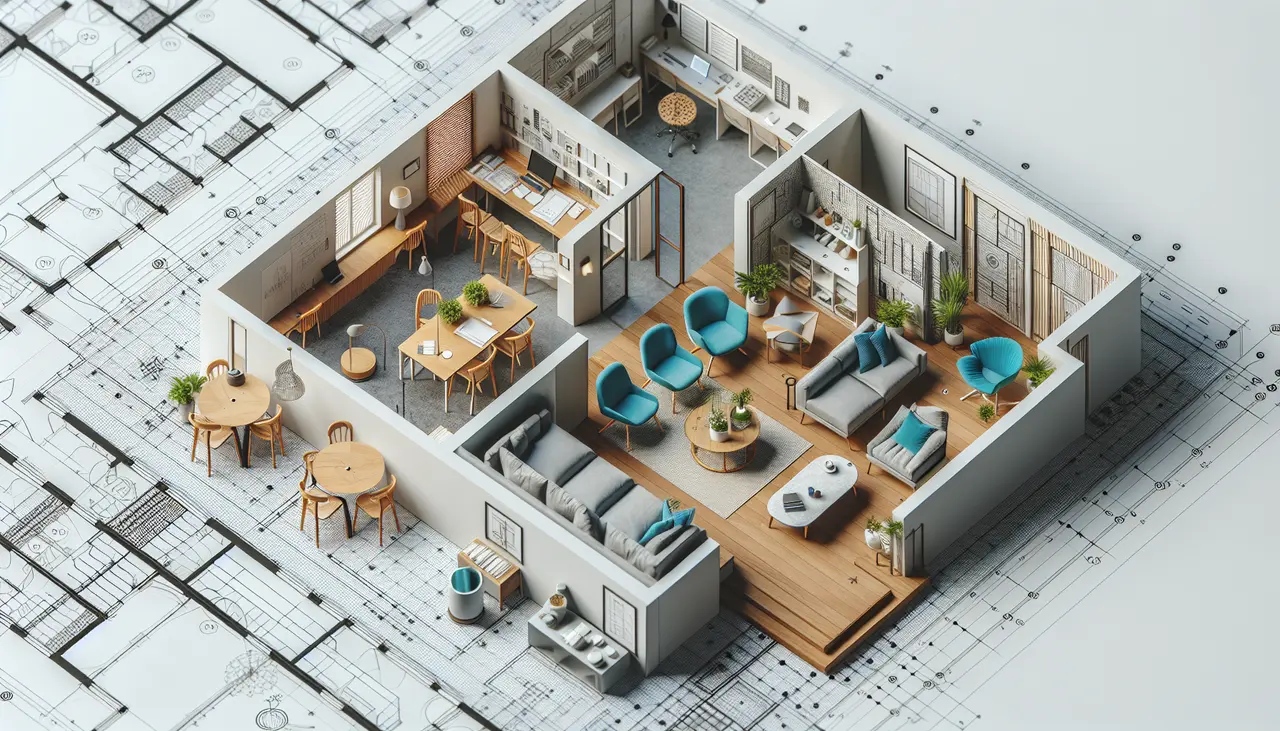What is Space Planning?
Diving into the world of design, space planning services stand out as a pivotal component for both commercial and residential projects. But what exactly are they, and why are they so crucial? Let’s unravel the mystery in the simplest terms possible, making it easy for everyone to grasp.
Understanding the Basics of Space Planning
At its core, space planning involves analyzing and allocating spaces to ensure they meet specific needs and functions. This process is not just about providing room for your desk to fit into the office or a bed into a bedroom; it’s about considering how the space is used, the flow between areas, the lighting, and much more. Effective space planning can transform an awkward or cramped space into a comfortable, functional, and efficient area.
The initial step in planning your remodeling project involves meeting with your designer to discuss your vision for the space. This consultation is the cornerstone of space planning, helping set the direction and goals for your project. It’s a client-focused approach that emphasizes understanding your personal or business needs as described in Planning Your Remodeling Project: A Journey Worth Taking.
The Significance of Space Planning in Modern Design
Space planning is vital in modern design as it gives us the chance to reshape how spaces work and improve the experience for everyone in them. Nowadays, we can craft spaces that are not only beautiful but also functional and eco-friendly. The principles of modern design like adaptability, productivity, and imagination go hand in hand with great space planning, making it a key element in exciting design endeavors.
The Process of Space Planning
The process of space planning breaks down into several steps, starting from the initial consultation, where designers work closely with clients to understand their needs and vision. Following this is the evaluation of the existing space, considering elements like natural light, traffic flow, and available square footage. Designers then develop a plan that optimizes the use of space, incorporating flexibility for future changes. From there, detailed drawings and specifications are prepared, ensuring every aspect of the design meets the client’s expectations and adheres to relevant regulations.
Types of Space Planning Services
Space planning services cater to various sectors, including residential, commercial, and public spaces. Residential planning focuses on creating functional and comfortable living spaces, while commercial projects aim to optimize productivity and employee well-being in offices or retail spaces. Public space planning addresses the needs and safety of communities in areas such as parks, public buildings, and transportation systems. Each service type necessitates a distinct approach informed by sector-specific knowledge and experience.
Benefits of Professional Space Planning
Hiring an interior design pro for space planning boosts space efficiency, function, and beauty. Pros offer fresh eyes, spotting hidden potential. They keep up with trends and rules, making sure your space shines and adheres to standards. Crucially, they help dodge expensive errors, guiding smart choices that enhance your space’s value.
Choosing the Right Space Planning Service
Choosing the perfect interior design firm for space planning services means looking at their track record, work examples, and what previous clients have said. It’s key to pick a service that matches your project’s size and design ideals. Talking about costs and how long things will take is important to make sure it fits with your financial and timing plans. Setting up early meetings with possible providers helps you get a feel for their approach and decide if they suit your project’s requirements.
Common Challenges in Space Planning and How to Overcome Them
Challenges in space planning often arise from limitations such as budget constraints, structural issues, and regulatory requirements. Overcoming these challenges requires creative thinking, flexibility, and often, compromise. Professionals in space planning have the experience to navigate these issues, finding solutions that balance aesthetics, functionality, and compliance, even within tight constraints. Communication between the client and the design team is key to addressing challenges proactively and ensuring a seamless project flow.
Space Planning Trends to Watch
Space planning’s future leans on sustainability, tech, and versatility. Going green cuts eco footprints and boosts efficiency. Tech brings smart spaces, enhancing adaptability and ease. Flexibility in design meets our changing living and working ways, allowing spaces to grow. Knowing these trends sparks creative and forward-thinking in space planning.
Wrapping Up Space Planning Essentials
Getting to grips with space planning services kicks off your journey to making any spot both useful and good-looking. Looking to redo your living space or tweak your office setup? These services bring the know-how and insight to make the most of any area. But remember, it’s not just about today’s layout; it’s about imagining what a space could be down the line. Embark on your space makeover with us at Southcoast Design Group and let’s design some inspiring spaces together.








